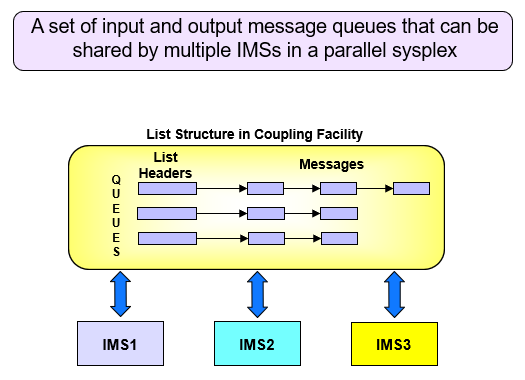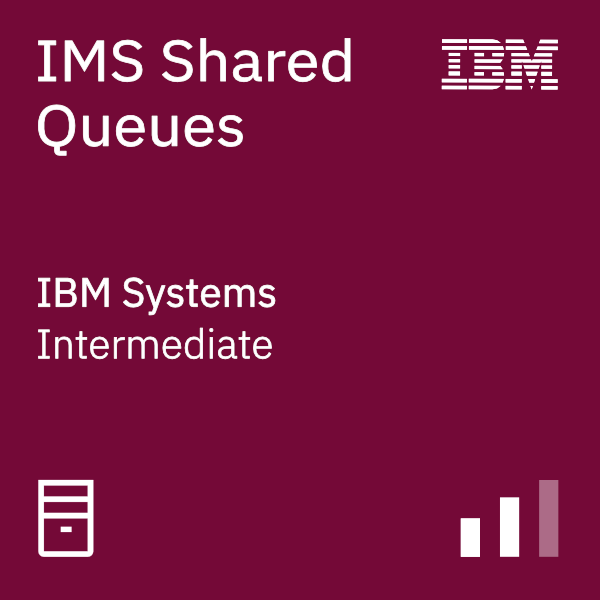Shared queues are a set of IMS message queues that can be shared between multiple IMS subsystems in a parallel sysplex.

OK, but what do you get when you implement IMS shared queues?
- Automatic workload balancing: messages can be processed by multiple IMSs
- Incremental growth: IMS subsystems can be added as workload increases
- Improved availability: Other IMS subsystems can take over if one fails and messages won't be lost
Take this course to learn how to initialize, manage, and troubleshoot the shared queues environment, which offers the ability to share full-function message queues and Fast Path Expedited Message Handler (EMH) queues within a parallel sysplex environment.
This self-paced, 12-hour intermediate course is for IBM® IMS system programmers, IMS Transaction Manager administrators, and IMS database administrators who want to implement and maintain an IMS shared queues environment.
Prerequisites
You should have practical experience with IMS and z/OS systems. You should also understand the basic aspects of sysplexes, IMS message queues, and data sharing.
Objectives
After completing this course, you should be able to:
Understand IMS shared queue concepts:
- Describe the differences and benefits in using IMS shared queues
- Describe the difference in how IMS uses the expedited message handler when shared EMH queues (EMHQ) are used
Plan for the implementation of shared queues:
- Describe the components and the IMS system definition options of an IMS shared queues environment
- Describe the IMS execution-time parameters associated with IMS shared queues
Implement basic IMS shared queues:
- Initialize shared queues and describe the processing that IMS performs when queuing and accessing shared queue messages
- Understand IMS transaction processing and scheduling when you use shared queues
- Describe the features of the Common Queue Server (CQS) and the coupling facility, both of which provide integrity and recoverability for IMS shared queues structures
Understand the implications and considerations of implementing shared queues in specific situations:
- Explain Multiple Systems Coupling (MSC) considerations that apply to IMS shared queues
- Describe how conversational processing works with shared queues
- Describe the differences in log records when shared queues are used
- Use IMS exits and z/OS cross-system coupling facility (XCF) commands to tailor and manage IMS systems that use shared queues
And if you pass the course, you'll get a digital badge!

Don't forget to visit IMS Central to find more IMS training content, what's new, and links to documentation and support.